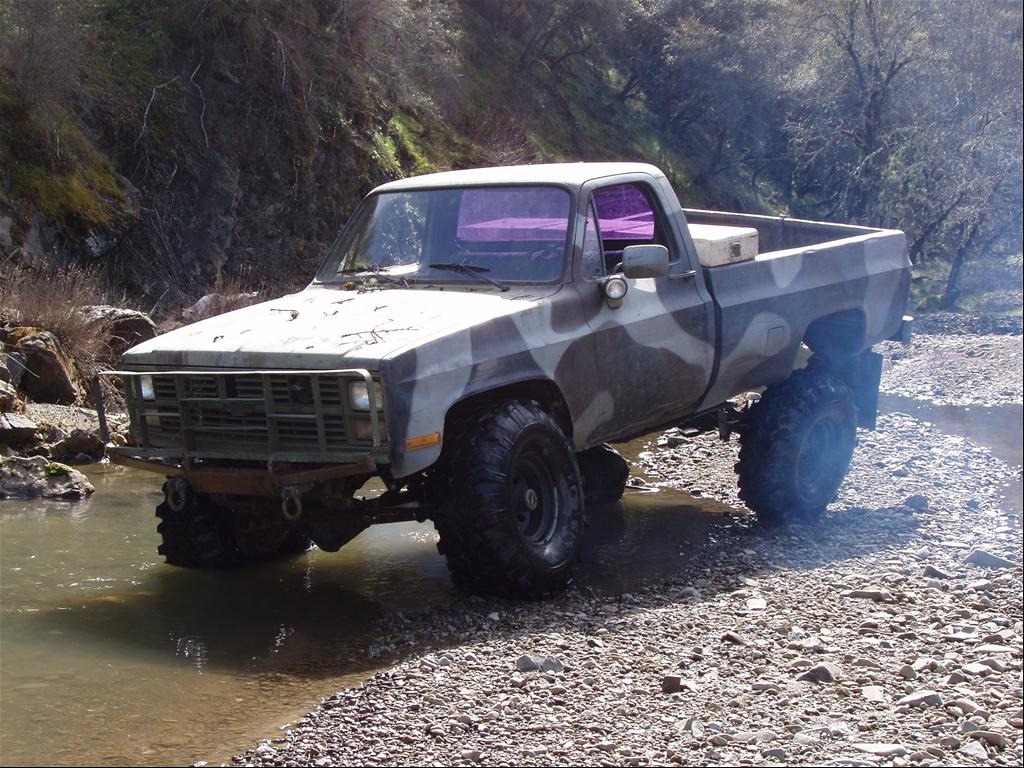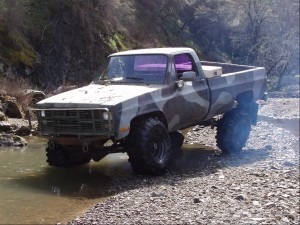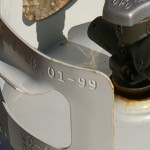
By Sixpack | From survivalistboards.com

Peoples opinions on which Bug Out Vehicle (BOV) is the best, are about as varied as the discussions on which firearm is the best. But choosing a BOV is something I’ve given a lot of consideration to because I live on the out-skirts of a major city, and will have to bug-out to a prearranged retreat in the event of a crisis. I started researching my options shortly after the 9/11 attacks, and have come up with the criteria that fit my needs, and maybe the needs of some body else.
This is what I’ve come up with, and I hope it helps someone else.
1.) Four wheel drive vs two wheel drive–Whatever vehicle you choose MUST be four wheel drive, nothing else will do when going off-road. I know that in my area, any and all paved roads will rapidly become parking lots, leaving going cross-country as my only option and two wheel drive will do nothing but get you stuck.
2.) Cargo capacity–What ever vehicle you choose MUST have adequate cargo capacity to carry ALL your survival goods, plus your loved ones (there are off road trailers that can help, and I’ll address those later). This leaves out any of the CJ-YJ series Jeeps, Honda’s, or ANY of the small “SUV’s.” I personally wouldn’t use anything smaller than a half ton. You must also remember that the heavier duty the vehicle is, the tougher it is to break. And believe me when you go off-roading, parts break. So again the spaghetti thin axles and drivetrain parts on these smaller “SUV’s” will probably become a liability, if you have to go cross country.
3.) Mostly stock vs highly modified–Unless you’re extremely wealthy and can carry any spare parts for a modified 4×4, what ever vehicle you choose should remain as stock as possible, with mild upgrades of hard parts being ok. While it’s cool to have a 4×4 that has a lot of “eye candy” and makes every one at the local “Joe’s-biffy-burger-cruise-in” jealous with envy, it will be very difficult to repair in the field when something breaks. You’ll have a much better chance of finding used parts for a mostly stock vehicle, than one that is highly modified. Just keep your modifications to those that will add durability to the vehicle, and give you better off-road performance.
4.) Diesel engine vs gas engine–I’m a huge proponent of a bug-out vehicle that runs on diesel for a number of reasons.
a) Durability: A diesel engine’s service life is about twice that of a gas engine.
b) EMP proof: Most of the diesels manufactured before 1998, are mechanical (no computers to control the vitals), and electronics are minimal and should survive an EMP blast, or will be easy to replace. [If I’m wrong about this, some one correct me.]
c) Economy: Generally speaking a diesel engine will get better fuel economy, than it’s gas engine’s counterpart for the same vehicle.
d) Ability to use non-standard fuels: A diesel engine will run on other fuels that are “not for highway use.” Diesel engines will run on diesel (of course), home heating oil (keep some cheese cloth or old tee-shirts to strain it), kerosene, JP-5, and JP-8 jet fuels. So by “thinking outside the box”, you have improved your chances of finding a way to re-fuel, when the gas stations are out.
e) Storing diesel vs storing gasoline: With stabilizers, diesel fuel will store about ten times longer than gasoline that has stabilizers added. Those who already live at their retreat and are storing diesel, will have a fuel source longer than those who are storing gasoline. This also applies to those folks who have diesel generators and live at their retreats.
5.) Off-road trailers: For those who have to have “the latest and greatest” small SUV’s, off-road trailers are available. But when choosing one try to stay away from the standard Ball hitch, try instead to use a trailer that uses a Pintle type hitch. Any one that has done any off-roading with a ball type hitch, knows what I’m talking about. Over rough terrain they tend to come loose, and that’s not what you need when trying to get away from a crisis. There are some really nice commercial trailers but the downside to those is cost, they are expensive. The best deals I’ve found on good off-road trailers, are the ex-military trailers. I’ve seen them selling from around $300-$500, they are the best bargain for those wanting to go that route.
6.) Paint: Some might ask, “why is paint important?” Having brilliant, attention getting colors that stick out in the woods while trying to escape doesn’t make sense. A simple paint job, in a non-obtrusive basic color is your best bet. I would choose any of the green or brown colors as they will blend in better with foliage, a lot better that the flashier colors will. And if you have thought about it in advance, brown or green paints just need a light sanding, and paint job with camo-paint from Walmart, to blend in better.
7.) Diesel conversions for gasoline vehicles: These can be done, and are being done by more than a few off-roaders. I’ve seen Jeep Cherokees and Wranglers, as well as some other 4×4’s that have been converted. A lot of the conversions are being been done using the Cummins 4BT Turbo Diesels and the Hurcules DT3.7 Turbo Diesel. Both of the engines are four cylinder, and are achieving an average of 30-35 mpg. There is a company that is selling rebuilt Hurcules engines for $5,746, and also have the adapters to retro-fit them to several vehicles. You can find them at: http://www.kiva.net/~mars/engine.html The Cummins 4BT’s were used in a lot of the old delivery panel trucks, just look for an older Frito-Lays delivery truck, more than likely it’s a 4BT.
8.) Used military vehicles: Used military vehicles are a good source when looking for a bug-out-vehicle. The Chevy M1008/M1009 trucks and Blazers can be had for a very good price, most under $5,000. They use the 6.2 liter diesel, it doesn’t make a lot of power but it’s a very durable engine, and at the prices you can get them for it makes for a pretty good bargain. Another plus to using ex-military vehicles is, they are also already set up to tow the military trailers.
Okay, all this to get to what I have chosen for my BOV………………Whew!!!!
I ended up buying a 1980 Jeep Cherokee. I also bought a 1984 M1008 CUCV for it’s entire drivetrain. When the Cherokee is finished it’ll have the 6.2 diesel, turbo 400 tranny, an NP205 transfer case, a Dana 60 front axle and GM 14 bolt rear axle (both with 4.56 gears and lockers). I’m using stock leaf springs with a spring over axle swap in the front, and a shackle flip in the rear. We are making custom front and rear bumpers, sliders, and exo-skeleton with a safari rack. I’ve got four of the front fender flares from an older Jeep M715 military truck, these along with the lift from the suspension mods I’m doing, will allow me to run the Michelin 325/85r16 military radials, I’ve bought. It will also have a snorkel, and the exhaust raised above the roofline in case we come across deep water. I will be covering it in green bedliner instead of paint, I’m doing this for two reasons, durability and I hate washing this beast! If time allows I’ll also be doing the veg-oil conversion. Here are a couple pics from before I took it off the road to do the conversion, the black one is a friends that’s also being built.
Anyway, I hope my research and opinions help at least one person who is trying to figure out what they need in their bug-out-vehicle.
—
This article was originally posted at http://www.survivalistboards.com/showthread.php?t=17569








Good information, keeep it simple, I have a 1980 SSII international scout. Need to consider a pressure tank in the bumper, Winches front and back and extra battery power. Also a secondary alternator for a welding machine is almost mandatory because things break. Dont worry about frills such as AC. Heat is important and keep thinking ….. May even think about metal screens on the windows to keep your family safe from intruders and tire protection. Gotta carry an off road bike as well…
That’s one nice feature of the M1008/M1009 military trucks… Dual alternators.
…I find it ridiculous to have all this bug out crap. I say spend your money and time for your place or somewhere close to home. There’s no way to beat the masses in a shtf situation. when you get the news so will everyone else…big traffic jam..my idea is to stay put where you are ready for anything..untill maybe the fire works die down. Yes I’ve got an old 4×4..but not for going off roading in the night..furthermore if you don’t have a piece of land all set up you are just looking for trouble…you don’t want to pull onto someones property way out in the boonies..there someone that owns it and will be waiting for you city slickers. If you have land..you need to commit to it…now..as in don’t wait..quit your job..get things in order..and start surviving…if nothing happens in 5 to 10 years..you can come back to town if necessary. I myself have a small place in the country..only about 1/4 acre..its in a small old-time development, a double wide trailer, small garden..and hope to be somewhat ready if shtf…who knows you will never be ready..fully..good luck…better safe than sorry..Don’t just hit the road!
Regarding your advise to “stay put where you are ready for anything”. The problem is in situations like a chemical spill, hurricanes, floods, and nuclear fallout, staying put is clearly NOT an option. In these situations, bugging out will be a requirement if you want to stay alive.
I would expect anything that is OBD to be succeptable to EMP, as there are numerous sensors, microswitches and monitoring devices (not all shielded solid state) used to manage and report engine function.
From http://obdii.com/background.html
“On-Board Diagnostic systems are in most cars and light trucks on the road today. During the ’70s and early 1980’s manufacturers started using electronic means to control engine functions and diagnose engine problems. This was primarily to meet EPA emission standards. Through the years on-board diagnostic systems have become more sophisticated. OBD-II, a new standard introduced in the mid-’90s, provides almost complete engine control and also monitors parts of the chassis, body and accessory devices, as well as the diagnostic control network of the car.”